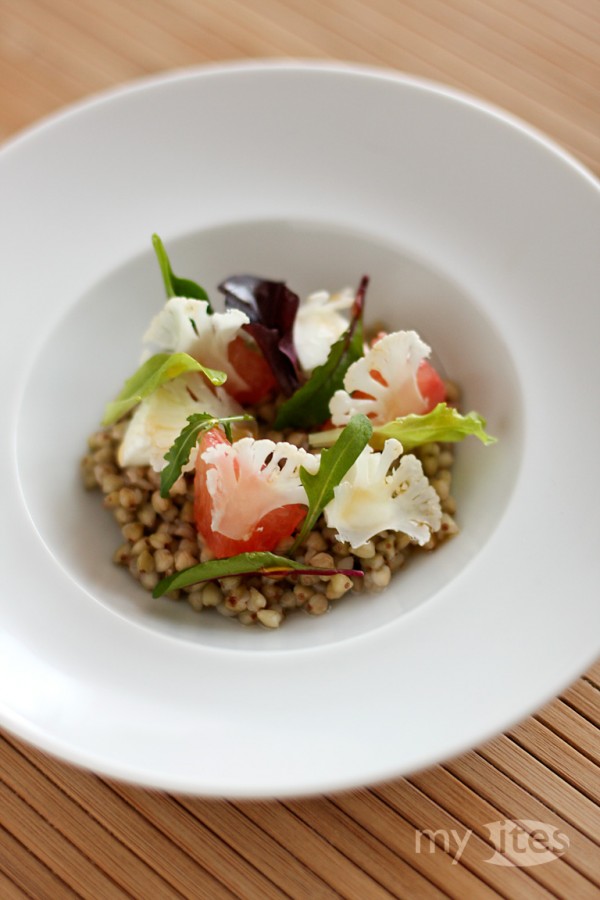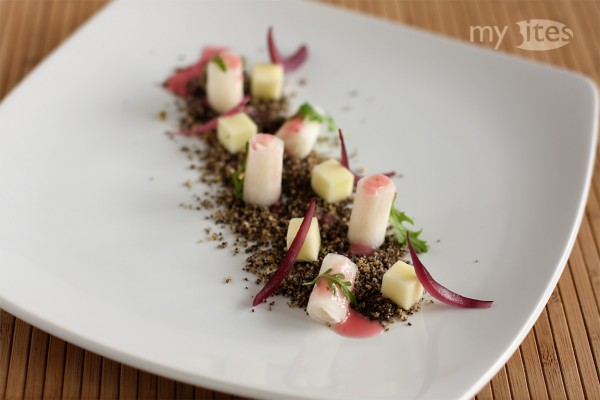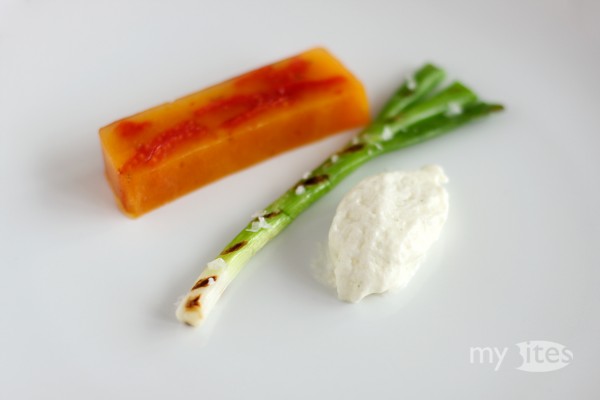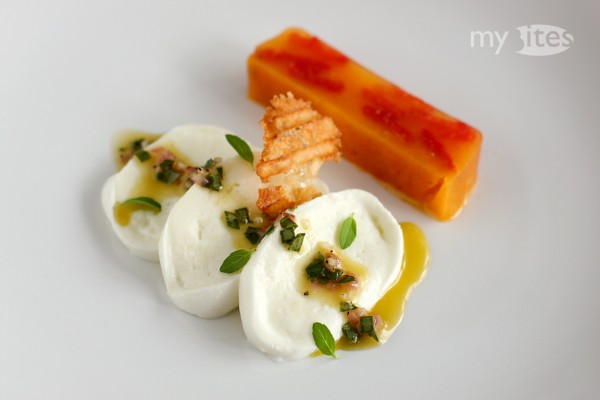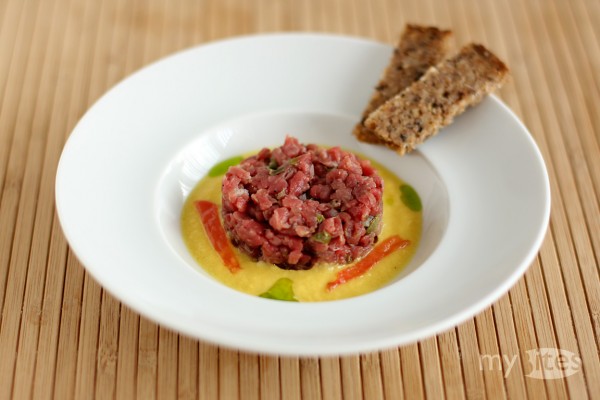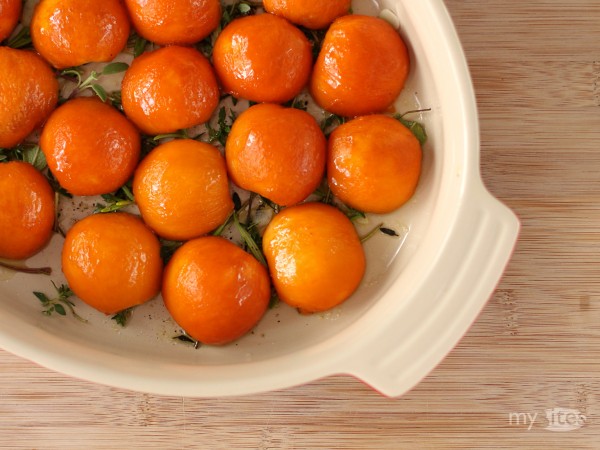Recently, I’ve been using the Foodpairing Explorer even more than usual. I created many interesting combinations, but with most of them I’m still thinking about the optimal ratios, preparations and presentations. The ingredient combination for this fast and simple vegetarian dish is based on a combo list too, which I linked together recently on Foodpairing.
Tag Archives: starter
Camomile Turnip on Poppy Seed Soil
In my previous post I gave a short review of the renewed Foodpairing website. In a short tutorial I went through all options of the Foodpairing Explorer and simultaneously created a combination of ingredients featuring poppy seeds, banana, turnip, apple and camomile. First this combination might sound a little bit weird, but if you take a closer look, they actually make sense together. Poppy seeds aren’t very sweet but slightly bitter on their own. Banana used as chips are less flavorful and less sweet compared to the raw fresh fruit and it contributes a nice crunchy texture too. Apples can be tart, turnips are actually very sweet and while they are both crisp, their consistencies differ. So to sum up, every main flavor and many different textures are present in the aforementioned combination, which is the foundation of creating an interesting vegan dish based on them.
Tomato Terrine, Goat Cheese Espuma and Grilled Spring Onion
If you plan to make a terrine say for 4 guests, you’ll always have to deal with leftovers due to form sizes and minimum amounts from which upwards terrines make sense. For example from this tomato terrine you can cut 14 to 16 slices, much more than you need for the twisted caprese. Leftovers, or generally food should never be wasted, so here’s another idea for an appetizer with the tomato terrine.
Twisted Caprese
August and the first weeks of September are the best time for incredibly flavorful local tomatoes. During the season you can find a wide selection of sizes, colors and shapes at the local market, which irresistibly invite you to explore the wide variety. Tomatoes are very versatile: you can broil, roast, grill, stew, fry, dry or simply use them raw e.g. in a salad. One of the most famous and popular salads with tomatoes is probably the Italian Caprese consisting of fresh tomatoes, mozzarella (from buffalo milk), basil, some olive oil and balsamic vinegar. In my version here I integrated the idea of a tomato terrine inspired by a recipe of Tanja Grandits. In her cookbook she called it tomato cassata and used some vanilla too, which I skipped. Instead of red tomato juice I pureed and sieved yellow tomatoes, which added a nice and vibrant color to the final dish.
Steak Tartare with Bell Pepper Coulis, Mustard Tomato and Dill Oil
Steak tartare appears quite often on menus in Hungarian restaurants. Usually the beef loin is matured covered in oil and some spices and herbs. This is a necessary step – unfortunately meat is not allowed to be aged long enough because of regulations of the health department. The beef is then minced using a grinder to order and usually served already mixed with spices, onions, garlic, an egg yolk and toast. This is the classic version you get in Hungary, but nowadays more elaborate tartares start to show up. Recently, I had a steak tartare at the Winekitchen, where the beef was finely chopped to order (by hand!) and served with fresh warm bread and mayonnaise made of pumpkin seed oil. It inspired me to create my own summer version of steak tartare.
Apricot and Bell Pepper Terrine with Ceps and Dill-Vinaigrette
Apricots belong to a special group of fruits. While most fruits loose more or less flavor when cooked, for apricots actually some gentle heat really enhances and helps to develop their flavor. Therefore it is always wise to bake or cook apricots before any further use. Or – if there is no time – just simply toss with some brandy or schnaps and flambe. For baked apricots you can either leave the skin on (and remove easily after baking) to get a more vibrant sour and tart note. Otherwise briefly blanch the apricots in hot water and peel them. For this current recipe I removed the skin because I didn’t want to have too much tartness in the end result. I baked the apricots at low temperature on a herb bed which enriched its flavor and took it in a savory direction. The original idea for the herb baked apricots itself is based on a recipe from German 3-star chef Juan Amador‘s cookbook. I’ve already prepared it several times and always tweak on the combination of herbs and the preparation. E.g. removing the skin before baking is clearly a better choice. The apricots pair really well with liver or mushrooms. In this recipe I incorporated them in a terrine, which can be used in multiple ways.
